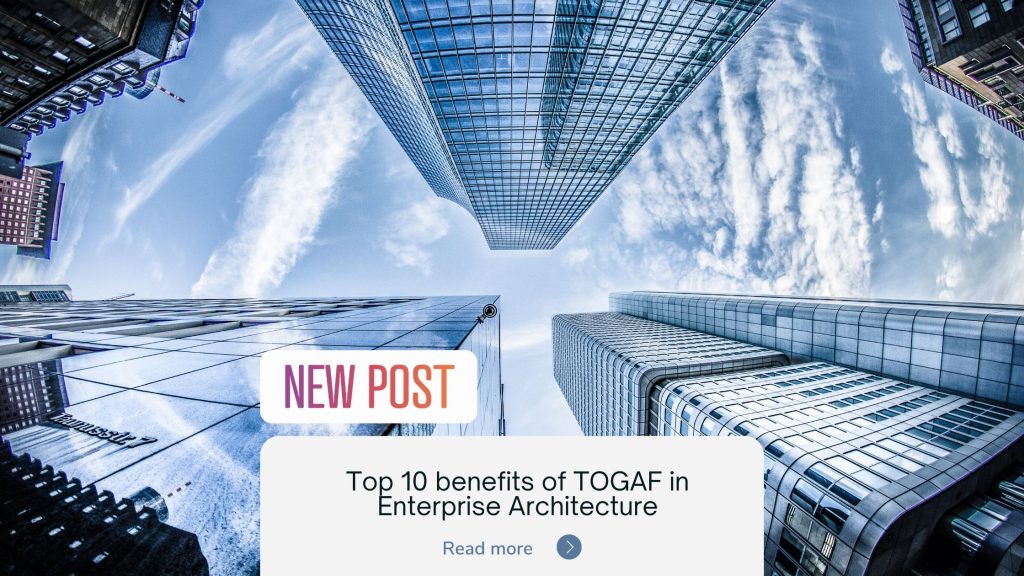TOGAF is globally recognized as the standard for enterprise architecture, and for good reason. It provides a comprehensive approach to enterprise architecture that can be used to improve business efficiency and effectiveness. Here are the top 10 benefits of TOGAF in enterprise architecture.
Introduction
The Open Group Architecture Framework (TOGAF) is a planning and design tool for enterprise IT architecture. TOGAF Certification Training Online in saudi uae can help organizations define, develop, and execute successful business outcomes by leveraging business, knowledge, application, and technology resources with a well-functioning IT infrastructure.
TOGAF was first created in 1995, based on the Department of Defense’s Technical Architecture Framework. The Open Group Institute has been in charge of the framework since the DoD gave it to them a little while after that.
It is crucial to choose a framework and the related body of knowledge when creating the enterprise architecture, in order to ensure that the company’s business and IT requirements are in harmony. An enterprise can be any government agency, business, or portion thereof, such as a single department within an organization or a chain of organizations joined by shared ownership.
It will also cover the expanded form of suppliers, customers, and partners. Therefore, enterprise architecture is the instrument that optimizes the manual and automated procedures put in place to gain a competitive advantage in an interconnected environment.
If you’re an enterprise architect, then you’ve probably heard of TOGAF®. In this blog, we’ll take a look at the benefits and drawbacks of using TOGAF® to fulfil your enterprise architecture requirements. We’ll also outline how it will help both the company and you as an employee.
Table of Content
- What is The Open Group Architecture Framework (TOGAF)?
- Why get a TOGAF Certification?
- What do TOGAF Professionals do?
- Functions of TOGAF in distinct types of Architecture
- Top 10 Benefits of TOGAF in Enterprise Architecture
What is The Open Group Architecture Framework (TOGAF)?
The Open Group is an industry association that has more than 450 member organizations. They create and maintain The Open Group Architecture Framework (TOGAF). TOGAF is a documented framework that enables individuals and groups to use Enterprise Architecture to plan, assess, and develop the most influential architecture for the business. Additionally, TOGAF is primarily intended to support IT architecture, but it also incorporates elements of business, data, and application architecture that influence the development of IT architecture.
TOGAF®, which was introduced in the 1990s, has gradually become more and more important as businesses and IT architectures have continued to develop. And as time has gone on, TOGAF®’s features have gotten more and more advanced, with TOGAF® 10 being the most advanced version yet.
Enterprise architecture provides a comprehensive framework for businesses to align their data requirements with their business goals. This includes identifying the necessary equipment and processes to gather and store data. TOGAF® is particularly valuable at this stage, as it provides a clear roadmap for businesses to follow as they transition from their current state to their desired future state.
Organizations can create IT facilities tailored to their needs by using TOGAF. Experienced TOGAF professionals may help in this situation; they interact with various division heads and aid in the quick and successful design and execution of an IT strategy.
To know more about TOGAF®, check out our TOGAF Training and Certification Course now!
Why get a TOGAF Certification?
TOGAF is a strategy that helps businesses and organizations plan a clear path from their current IT state to their desired one. It does this by taking into account all departments and conditions within the organization. This ensures that potential issues are spotted and dealt with before they become severe problems. Additionally, the technique includes ITIL, COBIT 5, and other organizational components.
It’s important for firms who are new to enterprise architecture development to understand its advantages. The process is made more effective by TOGAF. The organization’s architecture includes several essential elements, like the IT infrastructure, bankers, departments, and stakeholders. The architecture serves as the operating manual.
In order to compete in today’s market, organizations must be adaptive and constantly updating their strategies – something which has become easier to do with the introduction of new technology. For example, a company’s corporate architecture can be entirely changed with new software which requires less time, effort, and expertise to design. As the market continues to evolve, it is becoming increasingly necessary for companies to keep up with the latest trends in order to stay ahead of the competition.
It is important to understand why you should get a TOGAF® certification, let’s learn about the benefits of getting a TOGAF® certification:
1) Demand for business architects is high
2) Knowing a shared language
3) Staged strategy
4) The cost of the TOGAF certification is low
5) Boost your career and earnings
6) Examine unique opportunities
7) Better suit the demands of the company
8) Verify your expertise
9) No prerequisites
When your organization’s future success is at stake, it is advisable to take everything seriously. A TOGAF-certified individual is an enterprise architecture development expert skilled at developing plans to expedite transformation. They contribute to lowering risk and loss, which generates considerable savings.
Want to attain a TOGAF® certification? You’re at the right place. Check out our TOGAF Training courses now!
What do TOGAF Professionals do?
Enterprise architects who are TOGAF® certified professionals play an important role in simplifying complicated technological procedures. Developers and technical leads become TOGAF® certified to help them learn enterprise architecture concepts and assure their career path to architect and senior architect positions.
The enterprise architects (EAs) are responsible for developing the organization’s long-term IT strategy which supports the entire business plan. EAs make sure that every component of the technical flow is defined and that all procedures involving IT and IT-enabled systems run smoothly from beginning to end. They do this by basing their work on TOGAF® standards for technological infrastructure and creating a technology and application roadmap for the organization. By doing this, they can help avoid any disruptions or issues that might occur down the line.
Working on transformational programmes across several portfolios while overseeing numerous meetings and projects, such as:
1) Architectural Strategy– All elements of IT architecture strategy, including figuring out the strategy’s current condition, point of transition, and intended course.
2) Architecture Review Boards– Meetings of interested parties are regularly scheduled who discuss and accept changes to the existing architecture.
3) Portfolio management– Information on the condition and state of the IT infrastructure, portfolio management
4) Governance Committees– Stakeholder committees that decide on protocols, norms, and policies, notably those pertaining to security and requirements.
5) Technology Lifecycles– These define how the organization will implement updates and versioning for the various technologies it uses.
Want to become a TOGAF professional? Register for our TOGAF® 9 Training course now!
Functions of TOGAF in distinct types of Architecture
Now that you’ve learned about what TOGAF is, let’s learn about the functions of TOGAF in distinct types of architecture:
1) Business Architecture: Business strategy, governance, and important business processes are all defined by business architecture. It might be argued that TOGAF® aids in the definition and alignment of business architecture with the other elements of the enterprise architecture, which would support an overview level.
2) Application Architecture: Applications are developed according to TOGAF® standards, which guarantee effective communication between them. The underlying design has taken good care of the data interchange between them. The TOGAF® 9.1 design, which contains systemic elements across the entire IT ecosystem, will enable the application’s vital services.
3) Data Architecture: The way that the observed data assets are arranged is remarkably reasonable. Large amounts of data can be moved neatly, systematically, and without any information loss because of TOGAF®.
4) IT Architecture: IT is well-equipped with the technology and software needed to create a variety of applications, allowing for efficient operation. Additionally, TOGAF® contributes to the development of appropriate and essential IT infrastructure, middleware, networking, communications, processing, etc., which is necessary for the distribution of corporate, data, and application services.
Learn in detail about TOGAF®. Register for our TOGAF® 9 Training course now!
Top 10 Benefits of TOGAF in Enterprise Architecture
Let us understand the top 10 benefits of TOGAF in enterprise architecture:
1) Ease of application: The main benefit of using TOGAF for a company’s EA is that the Open Group’s structure employs a clear, thorough approach to developing Venture Architecture. Additionally, it is effortless to use, which saves businesses and employees from paying outrageous training costs.
2) Credible: The Open Groups (TOG) participant companies contribute to the TOGAF framework, which gives a solid academic framework that aids the challenging process of developing and sustaining a business architecture.
3) Global standard: TOGAF provides a standardised architecture development process as well as common definitions of components and deliverables. It is the preferred framework globally and the prerequisite in Enterprise Architecture. This shows that the TOGAF framework is significantly simpler to move between markets and to apply across the locations of business systems.
4) Procedure: The most thorough procedure for style development that isn’t particularly difficult is provided by TOGAF’s ADM (Architecture Development Method), sometimes known as the “framework of frameworks.”
5) Budget-friendly Certification: The accreditation cost only $550 for the TOGAF® 9 Combined Part 1 and 2 exam.
6) Ease of communication: Being a TOGAF expert necessitates extensive communication. As a recognised professional, you acquire the dialect spoken by all experts in your field. This facilitates teamwork and makes it possible to sell your ideas to everyone.
7) Meet the Business demands in a better manner: You can learn the TOGAF methodology and how to complete assignments effectively by taking a TOGAF course. This TOGAF training may help your company spend less money and generate more profit.
8) Networking opportunities: As with all certifications, obtaining a license for TOGAF 9.2 exposes you to experts in the same industry. You can network, learn about emerging market trends, and provide ideas that will help the TOGAF design framework.
9) No requirements: Unlike some other programmes, TOGAF training has no prerequisites for completing the certification. As a result, experts looking for employment in the field of Work design will have no trouble finding it after obtaining their license.
10) High demand: Smart businesses are adopting the TOGAF framework to determine how their organization’s organizational structure is regulated on both a short- and long-term basis as IT technology and architecture have grown ever more tightly intertwined with a business enterprise’s performance.
To enhance your awareness of architectural concepts, join our TOGAF® 9 Training course: Combined (level 1&2) today!
Conclusion
Earning your TOGAF certification can be extremely rewarding, both professionally and personally. The TOGAF certification course from TopD Learning provides you with the best training material and career advice to help you earn your certification and become a TOGAF certified expert. With our help, you can realize the many benefits that come with becoming a TOGAF certified expert. Don’t miss out on this opportunity – enroll in TOGAF®9 Certified (level 1&2) Training Course today! Contact us


